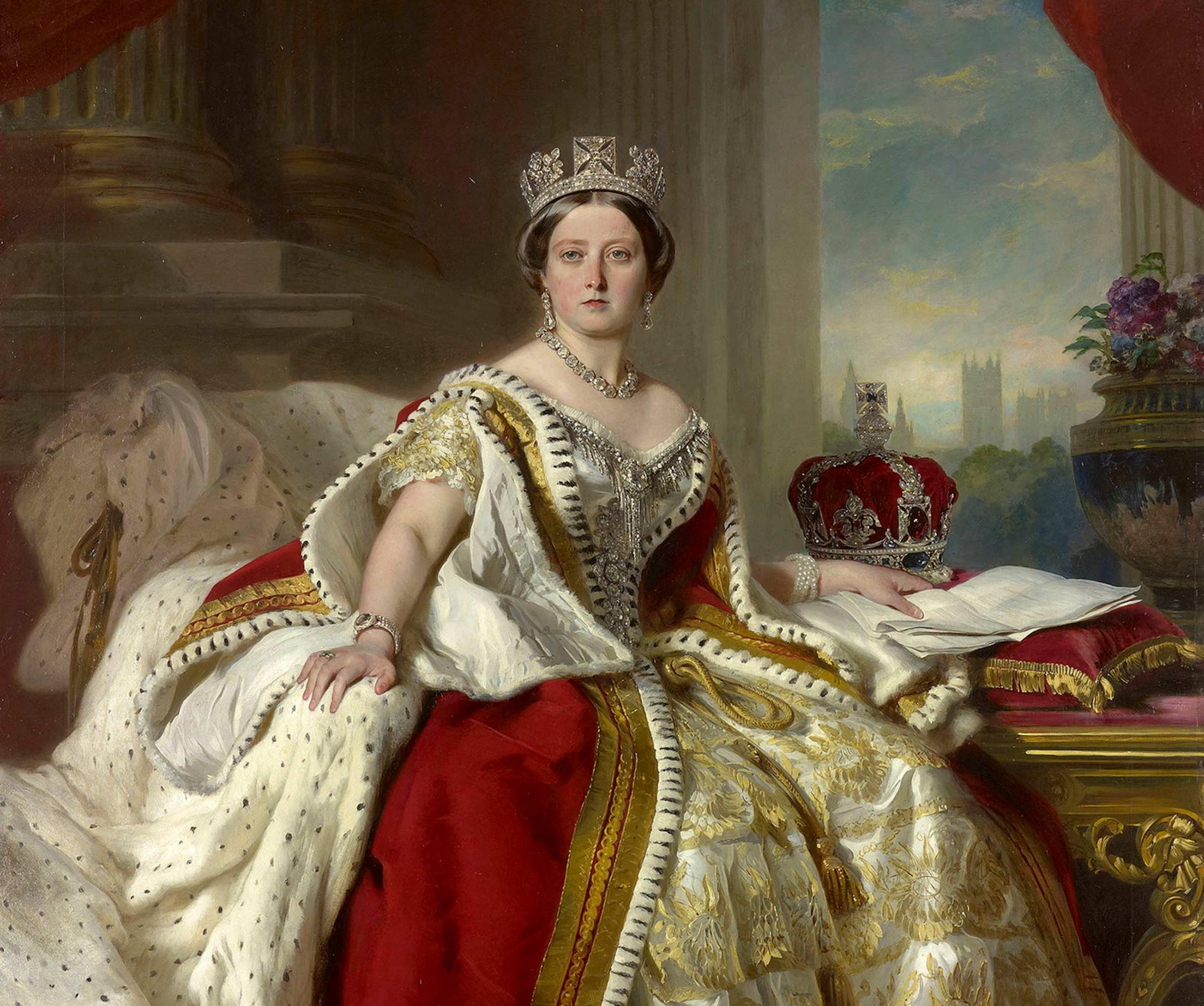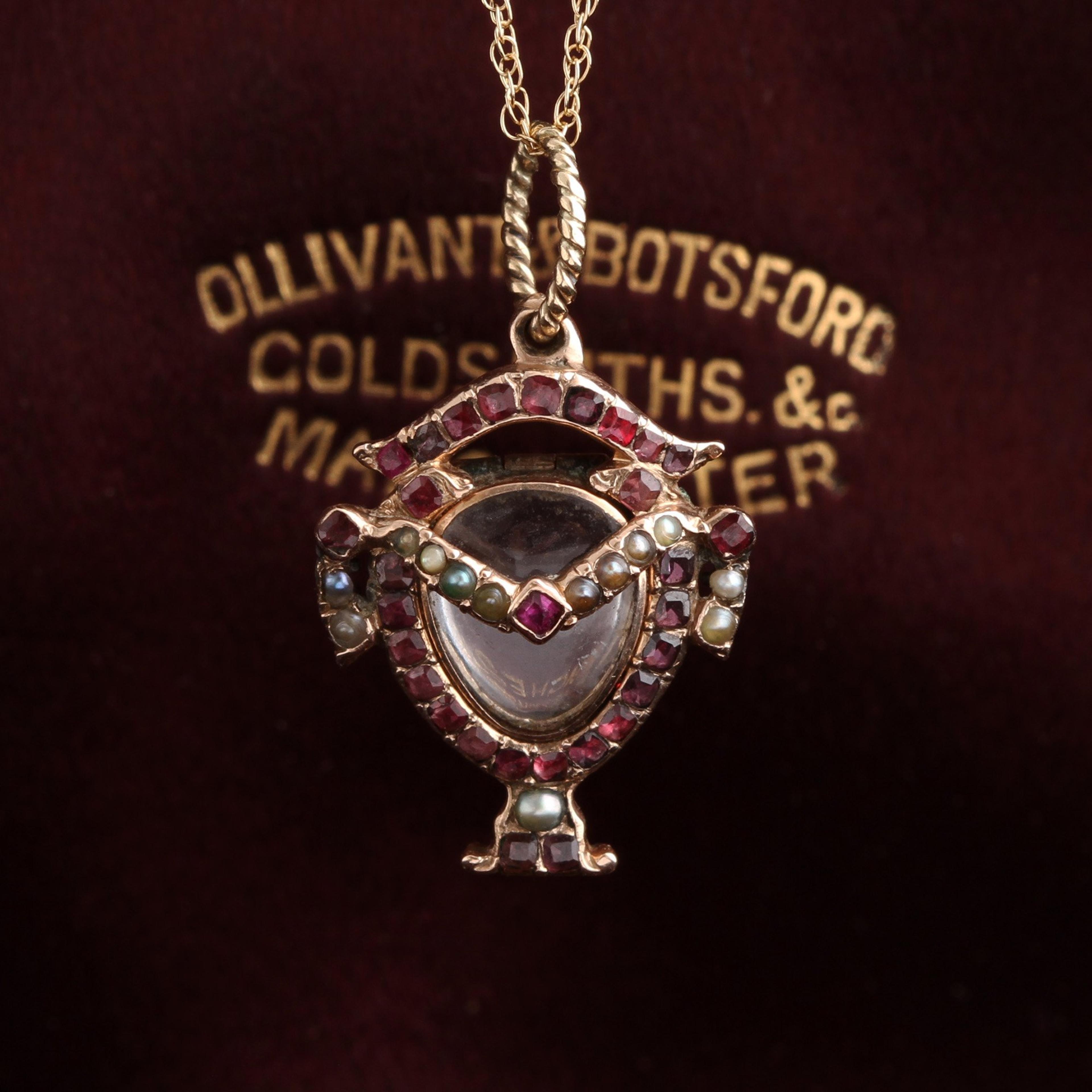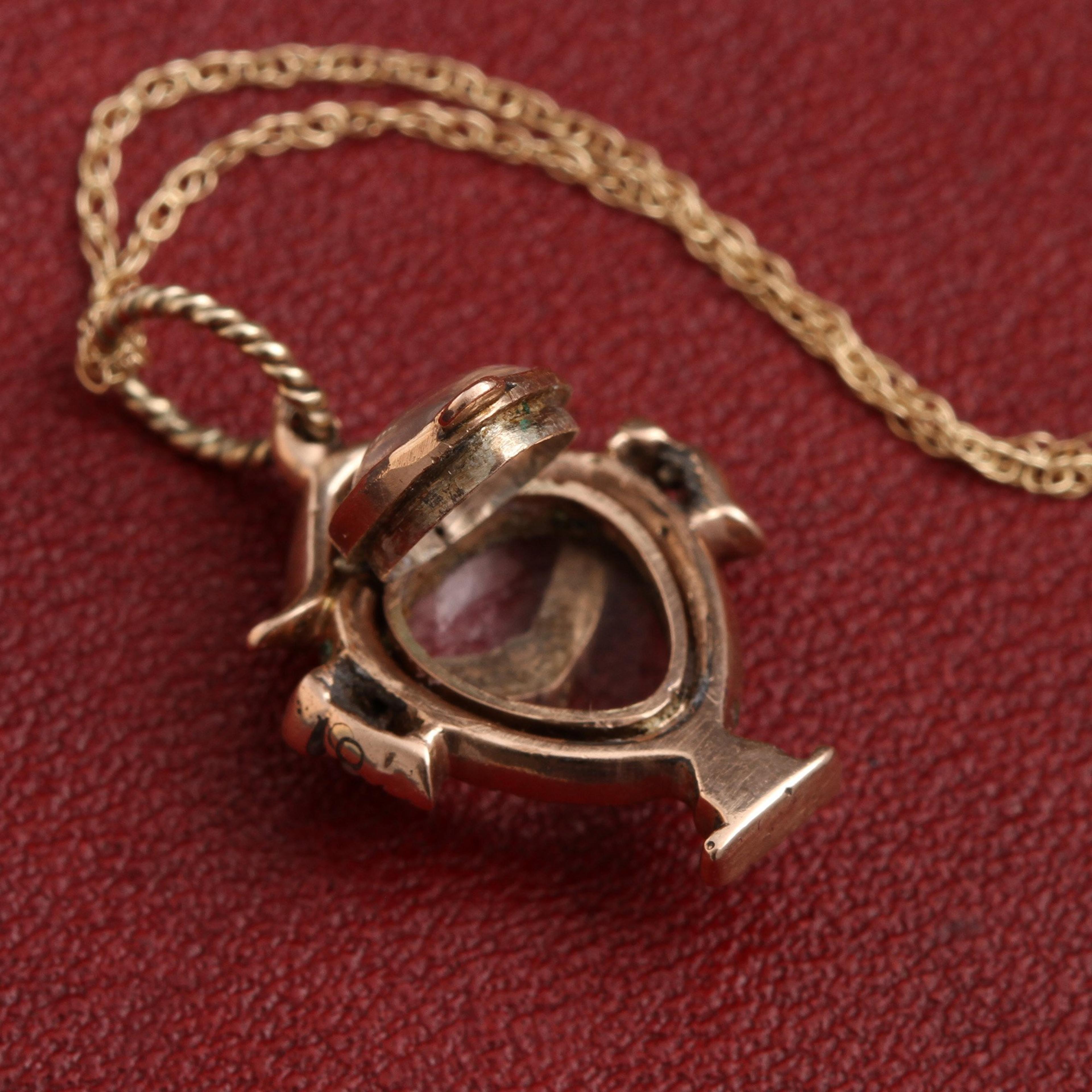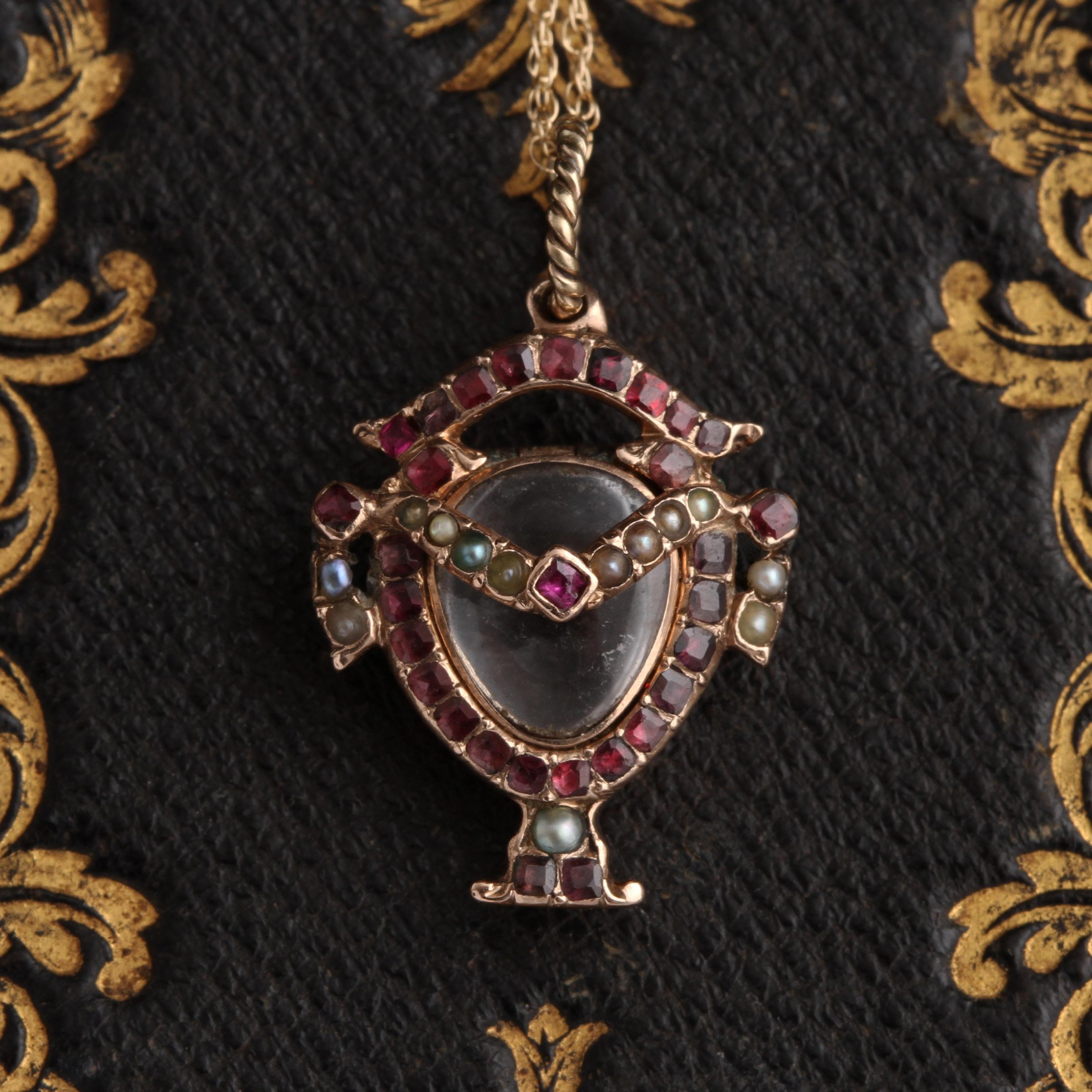This wonderful early Victorian urn locket is fashioned in 15k yellow gold with rock crystal lenses. The urn is articulated with a fiery array of flat cut garnets and crimson rubies offset by lustrous pearls ranging from gray to creamy white. This memorial locket would once have housed a lock of hair belonging to someone dear to its owner. The original hair is long gone which means that this locket is ready to hold new lock of hair, photo or other tiny memento. Hangs from a new 18" 14k gold chain.
thedetails
- Materials
15k yellow gold, rock crystal, rubies, garnets, pearls
- Age
c. 1840
- Condition
Very good - a few minor abrasions to the garnets, some of the pearls could be replacements
- Size
1" length including the bale, 1/2" at the widest point, 18" chain
Need more photos?
Send us an email to request photos of this piece on a model.

Aboutthe
VictorianEra
1837 — 1901
The Victorians were avid consumers and novelty-seekers, especially when it came to fashion, and numerous fads came and went throughout the 19th century. In jewelry, whatever fashion choices Queen V. made reverberated throughout the kingdom. The Romantic period reflected the queen’s legendary love for her husband, Albert.
Jewelry from this period featured joyful designs like flowers, hearts, and birds, all which often had symbolic meaning. The queen’s betrothal ring was made in the shape of a snake, which stood for love, fidelity, and eternity. The exuberant tone shifted after Prince Albert passed away in 1861, marking the beginning of the Grand Period. Black jewelry became de rigeur as the Queen and her subjects entered “mourning,” which at the time represented not just an emotional state, as we conceive of it today, but a specific manner of conduct and dress. She wore the color black for the remainder of her life, and we see lots of black onyx, enamel, jet, and gutta percha in the jewelry from this time. Finally, during the late Victorian period, which transitioned along with a rapidly changing world into the “Aesthetic Movement”, there was a return to organic and whimsical motifs: serpents, crescent moons, animals, and Japonaisserie designed for the more liberated “Gibson Girl”. During the second half of the 19th century, America entered the global jewelry market, with Tiffany and Co. leading the way. Lapidaries continued to perfect their techniques, and the old European cut emerged toward the end of the Victorian period. The discovery of rich diamond mines in South Africa made the colorless stones more accessible than ever before.


